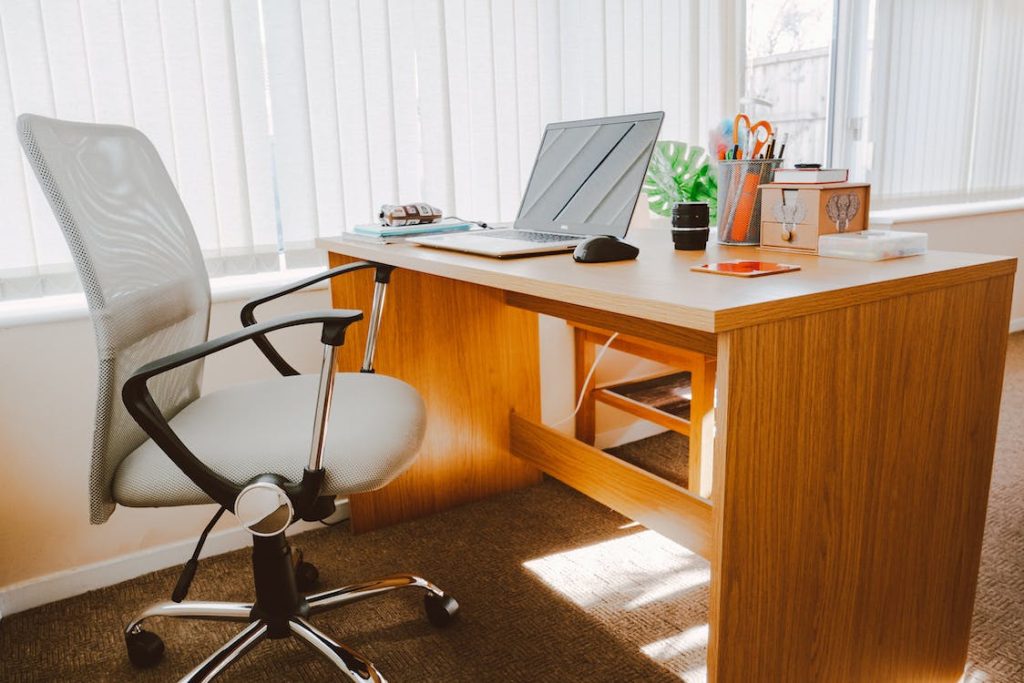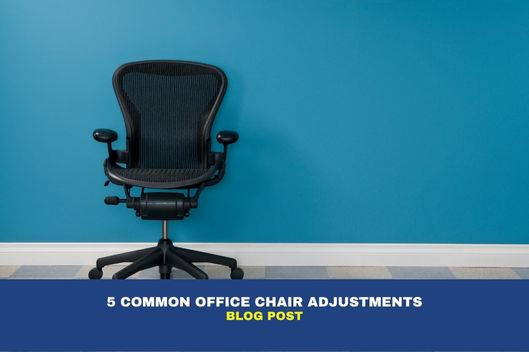Warehouse Clearance Sale – Limited time only!
5 Common Office Chair Adjustments
Compared to the classic and old designs of office chairs, today’s model includes ergonomic and support features or any other functional improvements. Today’s top-tier chairs contain more levers than just a tiny pane, often called adjustable office chairs, and we will discuss the 5 common office chair adjustments in this article.

Pneumatic Seat Height Adjustment:
The pneumatic seat height adjustment is a standard function in most executive, task, office, computer, and ergonomic chairs. This function allows the user to raise or lower the seat height. A pneumatic cylinder is attached to the chair’s mechanism situated under the seat cushion. This cylinder enables rapid and straightforward adjustment across a designated height range. You can control this function using a paddle or lever placed on the right or left side of the chair behind the seat cushion.
Tilt with Adjustable Tilt Tension:
Manufacturers may sometimes split the functionalities of tilt and tilt tension adjustment. These office chair controls are closely related, and you practically can’t have one without the other. Most task, computer, and executive chair models have an adjustable tilt with tilt tension. Thanks to this function, the user can rock or recline backward. Turning a typically big spherical knob underneath the seat and towards the front of the chair changes the tilt tension. You can easily adjust how much power is required to make the chair rock or recline backward. Some chair manufacturers place the tilt tension control to a lever or dial elsewhere on the chair, but most are situated in the front.
Tilt Lock:
Not all manufacturers utilize the same lever or place the lever in the same location to regulate this function. So it’s not unusual for many users to have some trouble in using the tilt lock function. Some manufacturers have one lever or rod that you must push in or pull out to lock and unlock the chair’s tilt. Some manufacturers use paddles or levers similar to seat height adjustment.
In most cases, locking a chair in a tilt position prevents it from being freed until the user reclines or tilts back a few degrees further reducing pressure on the lock bar or pin and allowing the chair to be reset back position. When the chair is upright, a tilt lock is also utilized to lock out the tilt. However, the best approach to becoming familiar with the precise controls of your adjustable office chair is to consult the owner’s handbook.
(2-to-1) Synchro-Tilt:
Many adjustable chairs provide this function. In essence, this adjustable office chair function allows the backrest to recline twice as quickly as the seat cushion. This function allows the user to recline without the usual “rocking chair” style recline, and keep their seat relatively level to the floor.
Back Height Adjustment:
This capability is available on most adjustable and ergonomic office chairs. The user can adjust the backrest’s height to place the lumbar support region within a predetermined range for individualized support. You can frequently change the back height by turning a knob on the backrest stem or frame. You can raise or lower to the position by loosening or tightening this knob. There is also a growing popularity in using a ratchet back height adjustment in newer models of office chairs.
Of course, there are various office chair features on the market. You may prefer an office chair with additional ergonomic controls or features based on your preferences, the amount of time you spend each day sitting down, and the chair’s intended use. Your office chair serves as your home away from home. Therefore it must provide adequate support and comfort.
In conclusion, these are the 5 common features of an adjustable office chair you can find on many office chairs. You can apply these options to prioritize your comfort while working on some tasks that you can’t just leave.
At Direct Office Furniture Perth, we believe that an ergonomic and comfortable workspace can greatly improve productivity and overall well-being. That’s why we offer a free space planning and consultation service to help you create the perfect home office that fits your needs and preferences.
We also have 5 Space-Saving Tips that can help you optimize your workspace and make the most out of your available area. Contact us today to learn more about our free space planning and consultation service. And how we can help you create a workspace that works for you.
